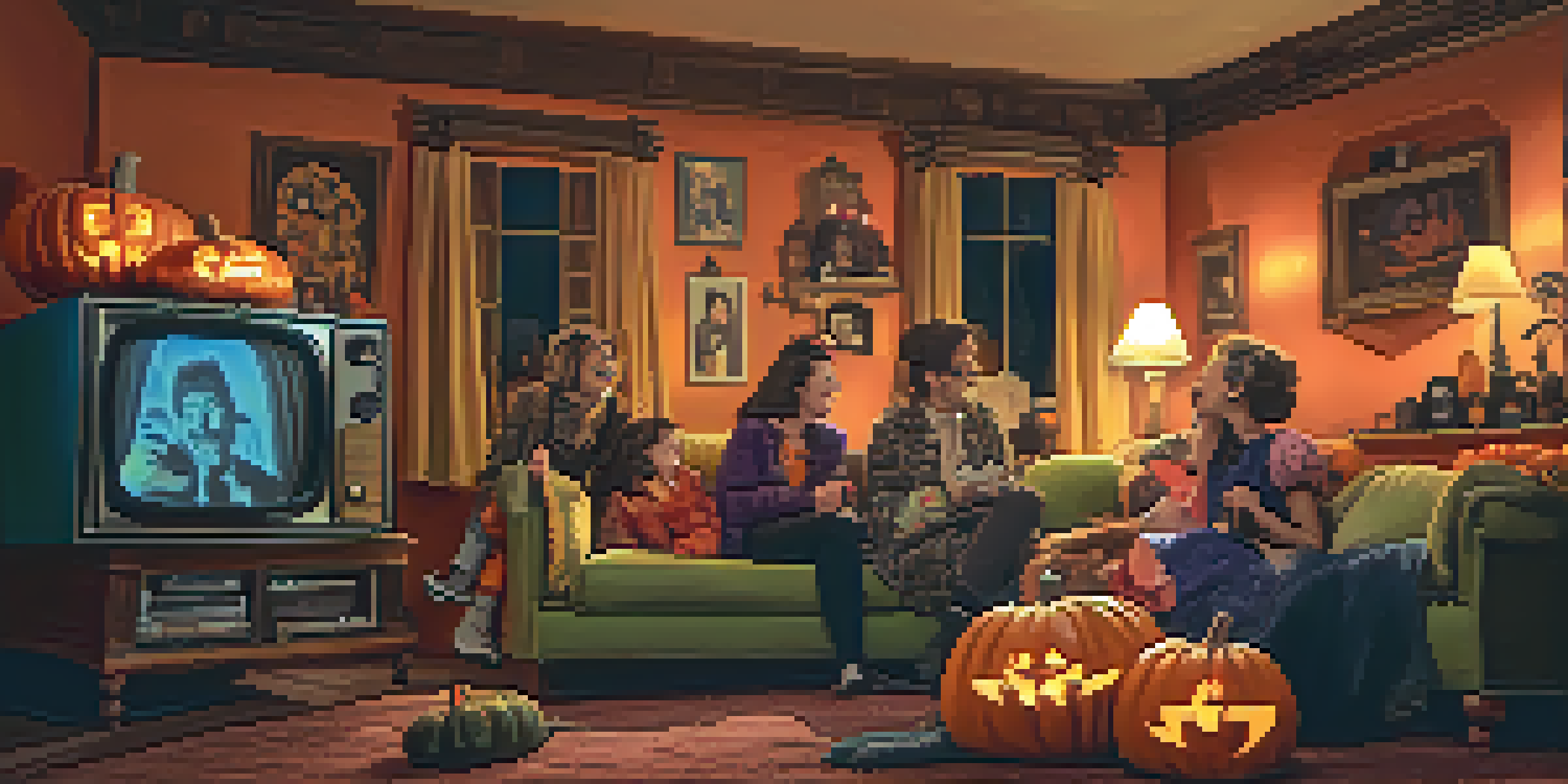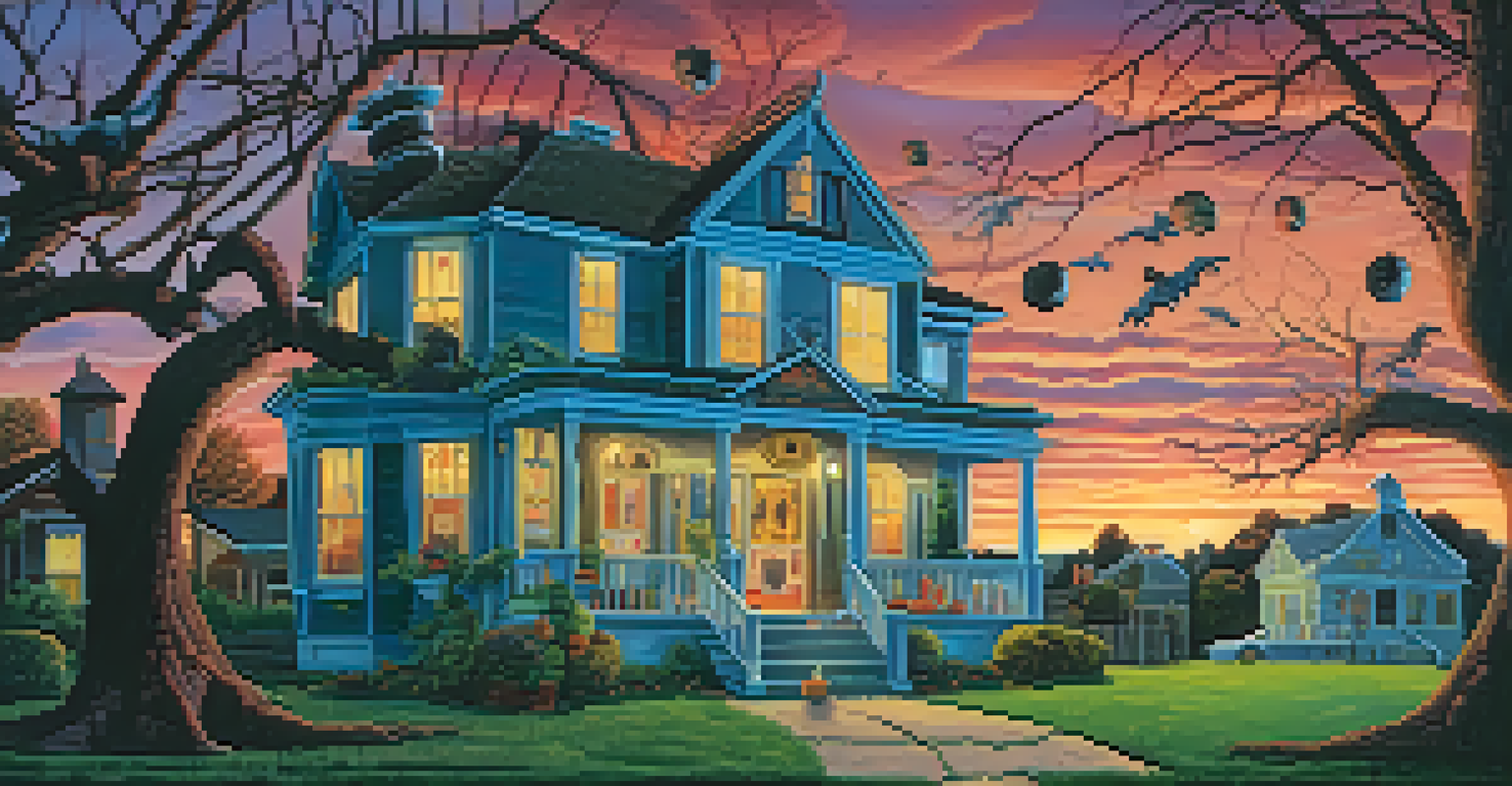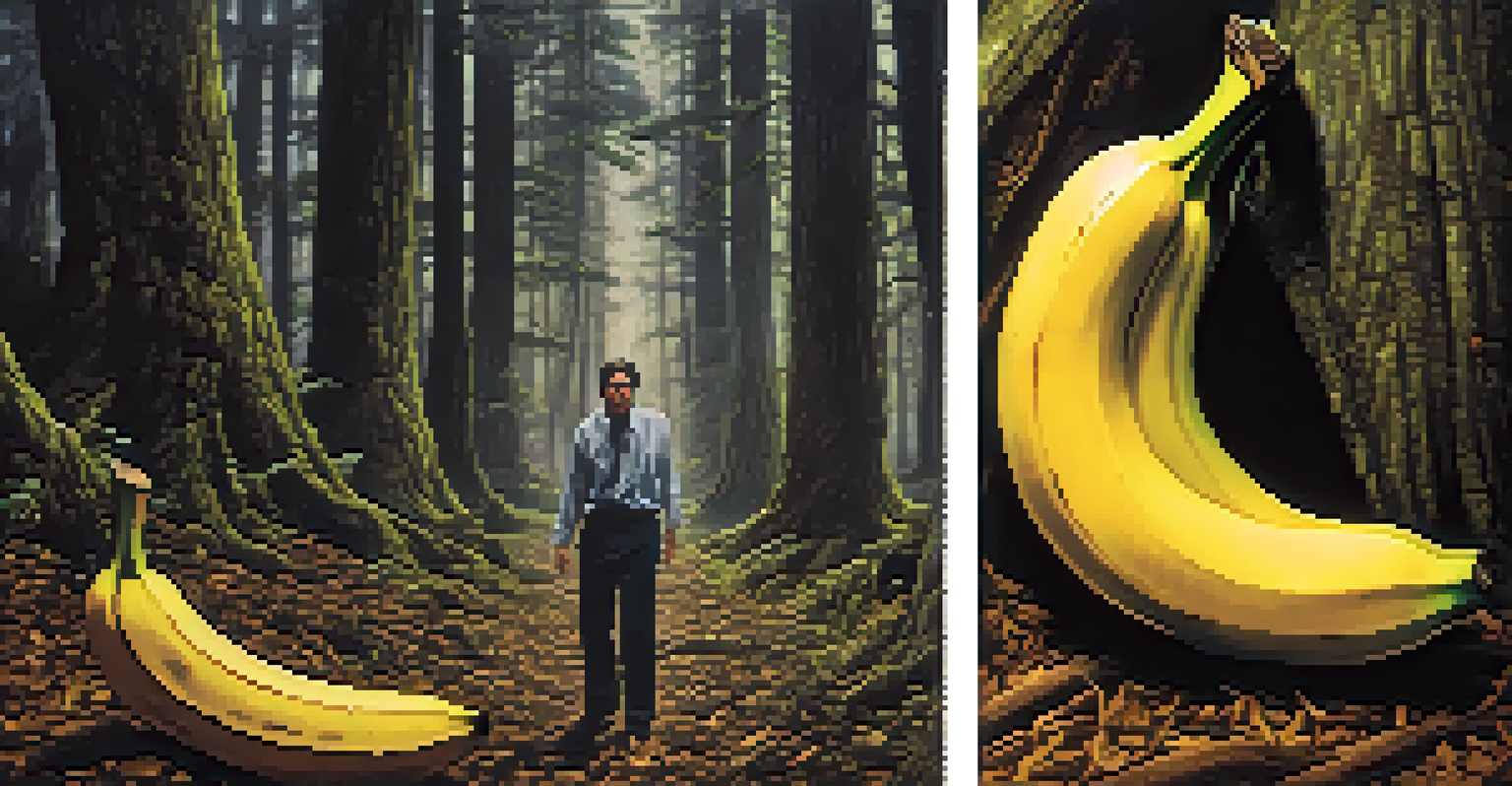The Art of Genre Fusion: Blending Comedy and Horror in Film

Understanding Genre Fusion: The Basics Explained
Genre fusion is an exciting concept in filmmaking where two distinct genres are combined to create something fresh and engaging. In the case of comedy and horror, this blend allows filmmakers to explore the human experience in a unique way, often highlighting the absurdity of fear while evoking laughter. This genre-bending approach not only keeps audiences on their toes but also enriches storytelling by adding layers of emotion and unpredictability.
The best horror films can be said to have a sense of humor about themselves. They know that life is absurd, and they exploit that absurdity to create a sense of surrealism.
One of the key elements of genre fusion is its ability to challenge traditional storytelling norms. By mixing horror’s tension with comedy’s lightheartedness, filmmakers can create unexpected twists that keep viewers guessing. For example, imagine a suspenseful moment where a character is hiding from a monster, only to be interrupted by a comical mishap. This interplay can transform a tense scene into a memorable, laugh-out-loud moment.
Ultimately, understanding genre fusion helps us appreciate the creativity behind films that defy categorization. When comedy and horror come together, they not only entertain but also provoke thought about the complexities of human emotions, from fear to joy. This rich tapestry of feelings is what makes genre fusion so compelling.
A Brief History of Comedy and Horror in Film
The blend of comedy and horror isn't a new phenomenon; it has roots dating back to early cinema. Films like 'The Cabinet of Dr. Caligari' showcased eerie visuals and dark humor, laying the groundwork for future genre fusions. But it wasn’t until the late 20th century that the combination truly found its footing, with movies like 'Evil Dead II' embracing absurdity in the face of horror.

As audiences began to crave something beyond the conventional horror tropes, filmmakers started to experiment more boldly. The '80s and '90s saw a surge of cult classics, such as 'Ghostbusters' and 'Shaun of the Dead,' which expertly balanced scares with humor. These films not only entertained but also became cultural touchstones, proving that laughter and fear could coexist.
Genre Fusion Enhances Storytelling
The combination of comedy and horror creates a dynamic narrative that engages audiences by blending tension and humor.
The evolution of comedy-horror films continues today, with modern hits like 'Get Out' and 'What We Do in the Shadows' pushing boundaries even further. By examining the history of this genre fusion, we can appreciate the bold creativity that has shaped the landscape of modern filmmaking.
Key Elements That Make Comedy-Horror Work
Successful comedy-horror films often share key elements that allow them to thrive. One of these is timing; knowing when to evoke a laugh or a scare can create a powerful emotional rhythm. For instance, a perfectly timed punchline after a chilling moment can amplify both the fear and humor, leaving audiences in stitches while their hearts race.
Comedy and horror are two sides of the same coin. They both play with the idea of tension and release, making us feel alive in ways we didn’t know we could.
Character development is another crucial component. Audiences need to connect with characters to feel the tension of horror and the relief of comedy. Whether it's a bumbling hero or a quirky sidekick, memorable characters can draw viewers into the story, making the blend of fear and laughter feel organic and relatable.
Lastly, setting plays a significant role in establishing the tone. A creepy, atmospheric backdrop can set the stage for genuine scares, while an unexpected comedic twist can lighten the mood. This balance between setting and tone is what keeps audiences engaged and invested in the outcome of the story.
Iconic Examples of Comedy-Horror Films
Several films have carved out a niche in the comedy-horror genre, becoming iconic examples of how these elements can mesh seamlessly. 'Shaun of the Dead' is a prime example, blending zombie horror with witty humor, showcasing how everyday life continues amid chaos. The film’s clever writing and relatable characters allow audiences to both laugh and scream in equal measure.
Another notable mention is 'The Cabin in the Woods,' which plays with horror tropes while delivering sharp comedic commentary on the genre itself. By subverting expectations, it creates a unique viewing experience that resonates with both horror enthusiasts and casual viewers. The blend of suspense and satire keeps people engaged, offering a fresh take on familiar themes.
Historical Roots of Comedy-Horror
Comedy-horror has evolved from early cinema to modern hits, showcasing its enduring appeal and cultural significance.
These films demonstrate that comedy and horror don’t just coexist; they enhance one another, creating a richer storytelling experience. By examining these examples, we can see how blending genres can lead to innovative narratives that resonate with diverse audiences.
The Role of Humor in Alleviating Fear
At its core, humor serves as a powerful tool for alleviating fear in horror films. By introducing comedic elements, filmmakers can provide audiences with a momentary reprieve from tension, making the scares that follow even more impactful. This technique plays on the psychology of fear, as laughter can release pent-up anxiety, creating a rollercoaster of emotions.
For instance, think about the classic jump scare: when you’re startled, a quick laugh can help diffuse the tension that builds. Movies like 'Tucker and Dale vs. Evil' use humor to flip the script, transforming horror clichés into laughable situations. This not only entertains but also offers a fresh perspective on the horror genre.
Ultimately, humor acts as a balancing force, allowing audiences to engage with fear in a more manageable way. It helps to humanize characters and makes their struggles relatable, inviting viewers to experience both the thrills and the laughs, thus deepening their connection to the film.
The Future of Comedy-Horror in Filmmaking
As the entertainment landscape evolves, so too does the genre of comedy-horror. With advancements in technology and storytelling techniques, filmmakers are finding new ways to blend these genres effectively. Streaming platforms have also provided a broader canvas for creators to experiment with unconventional narratives that challenge genre boundaries.
We’re already seeing a rise in innovative projects that push the limits of comedy-horror. Shows like 'The Haunting of Hill House' demonstrate how elements of humor can be integrated into darker narratives, making the genre more appealing to a wider audience. This fusion not only entertains but also sparks conversations about deeper themes like mental health and societal issues.
Humor Balances Fear in Film
Incorporating humor in horror films alleviates tension, allowing for a richer emotional experience for viewers.
Looking ahead, it’s clear that the art of genre fusion will continue to thrive. As audiences seek fresh experiences, filmmakers who embrace the dynamic interplay between comedy and horror will undoubtedly find success in crafting stories that resonate with viewers across the spectrum.
Why We Love Comedy-Horror: A Psychological Perspective
So, why do we love comedy-horror films? From a psychological standpoint, these films tap into our innate desire for thrill while providing a safe space to confront our fears. The juxtaposition of laughter and terror creates a unique experience that allows viewers to explore darker themes without feeling overwhelmed.
Moreover, comedy-horror often fosters a sense of camaraderie among viewers. Sharing a laugh during a tense moment can strengthen social bonds, making the experience of watching these films more enjoyable. This communal aspect is one reason why horror-comedies often become cult favorites, with audiences returning to enjoy the mix of emotions together.

Ultimately, comedy-horror films offer a cathartic release, allowing us to confront fears in a light-hearted manner. This blend of genres provides not just entertainment, but also a deeper understanding of our emotional responses, making comedy-horror a beloved genre for many.